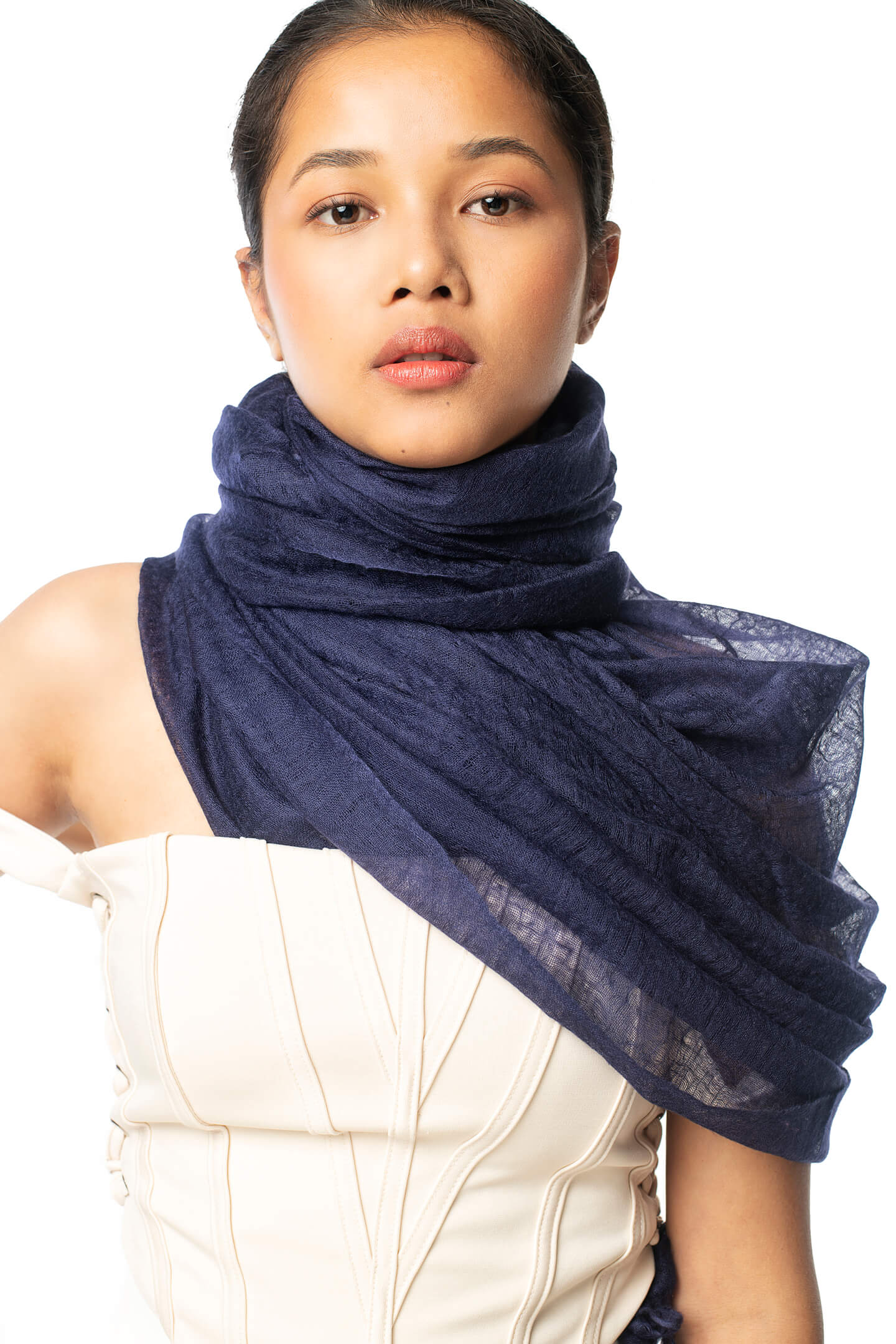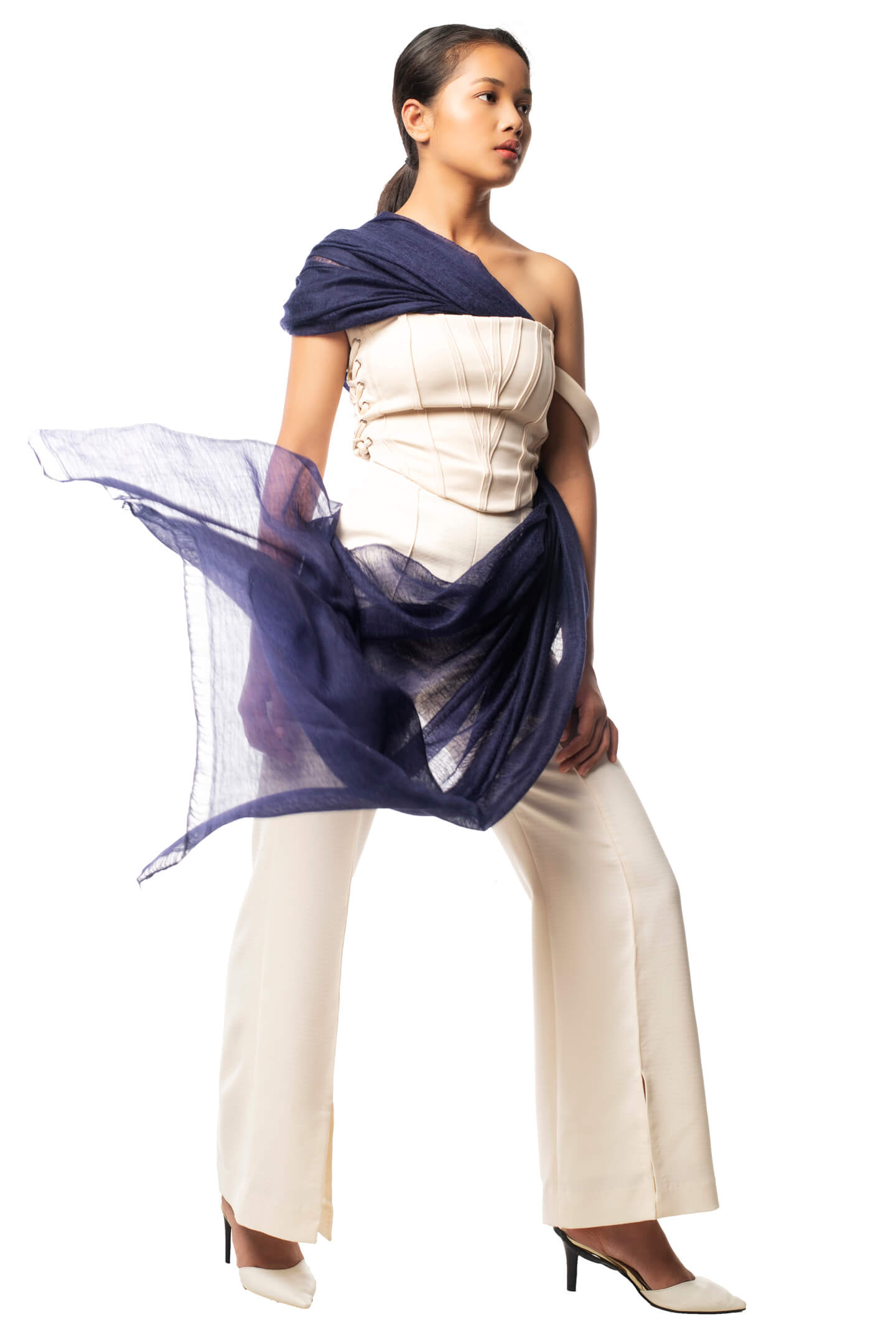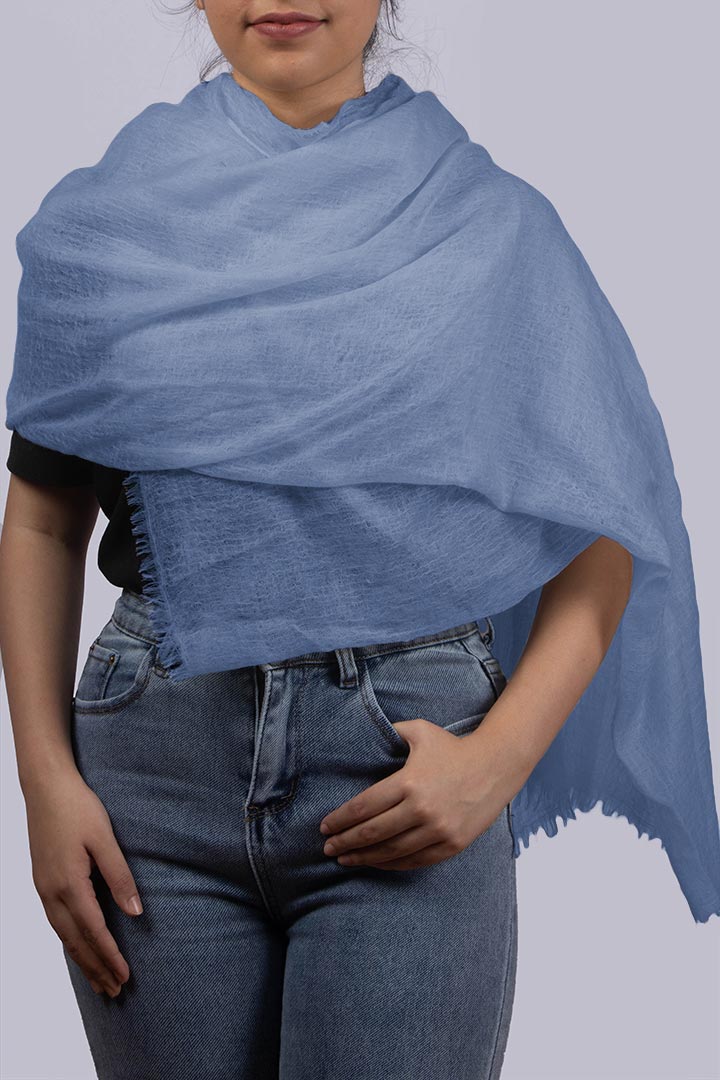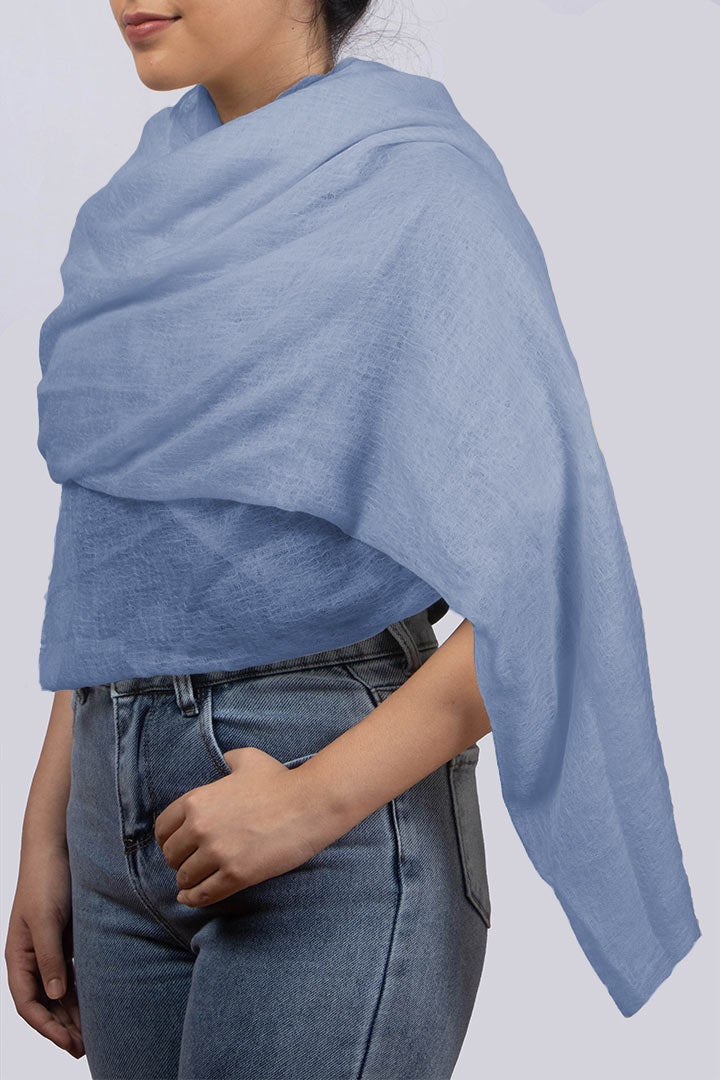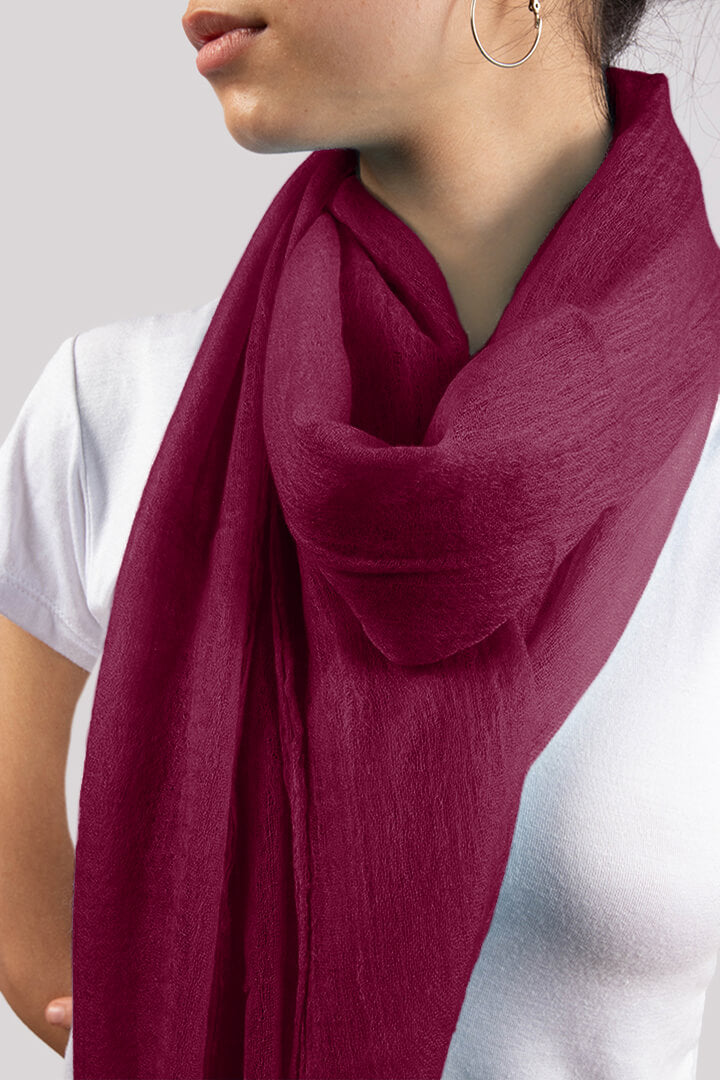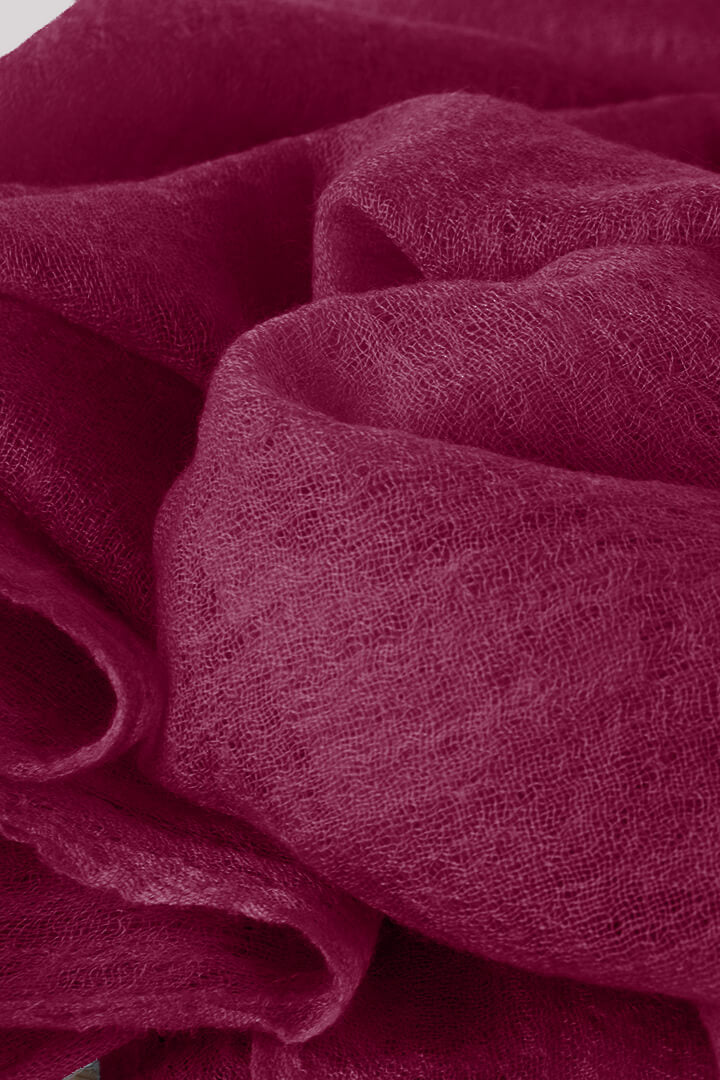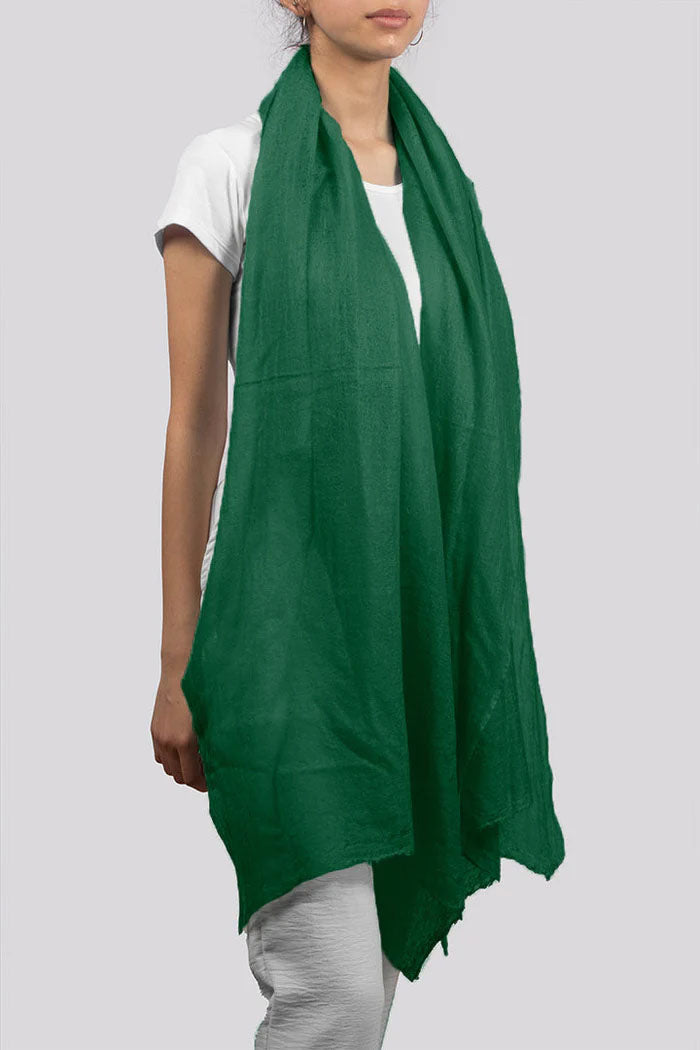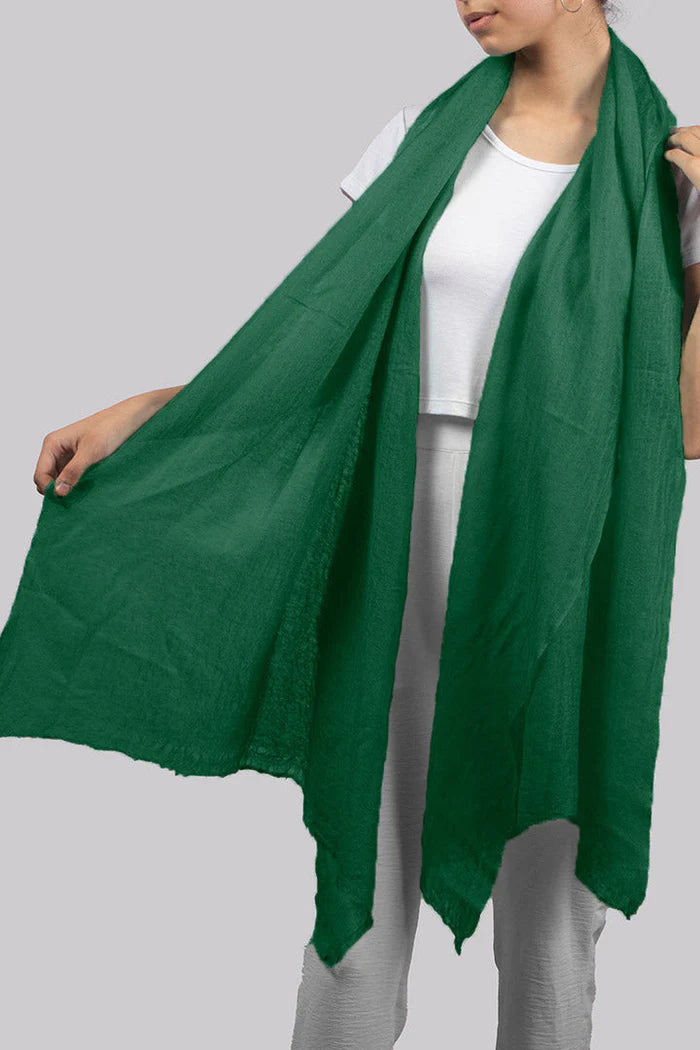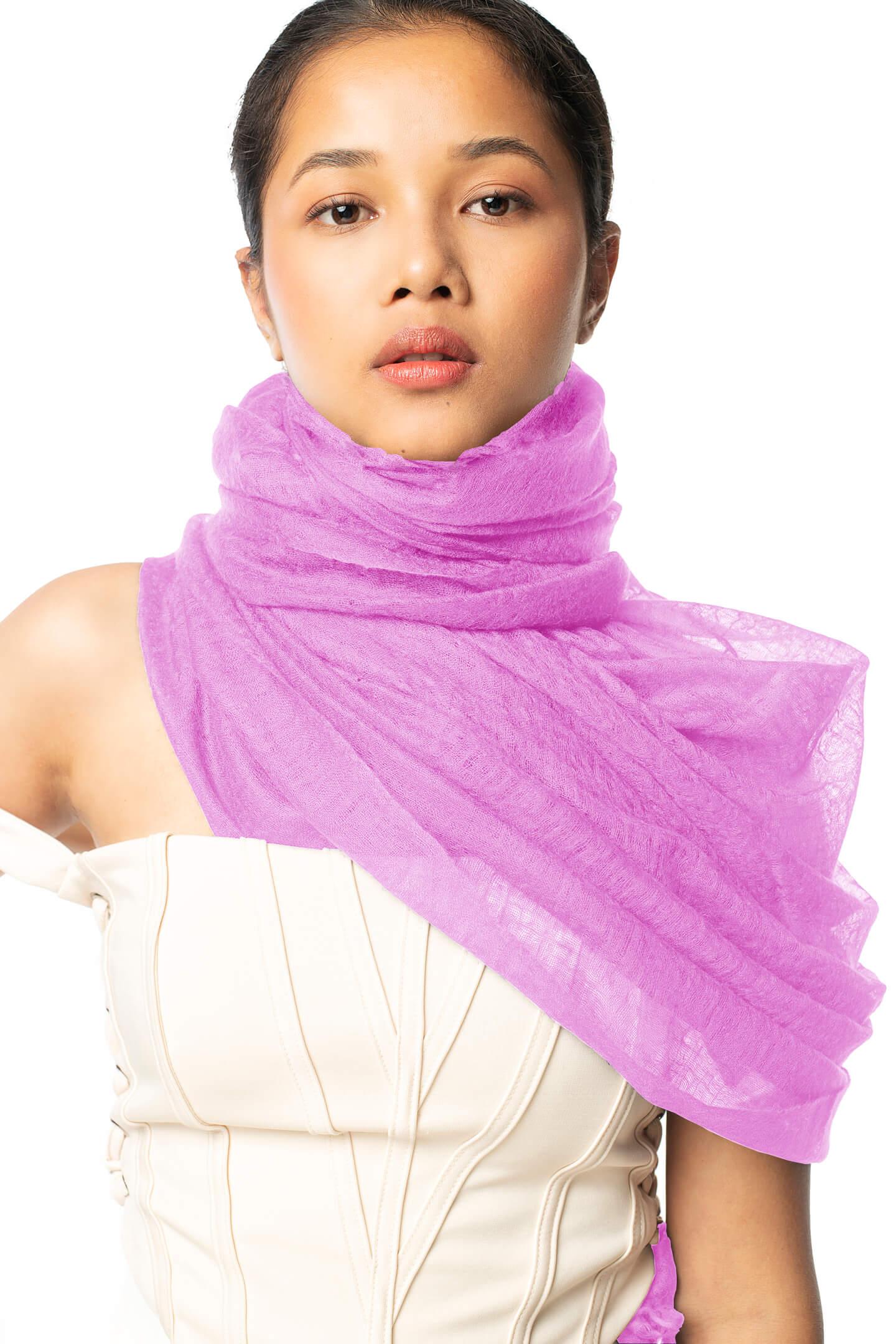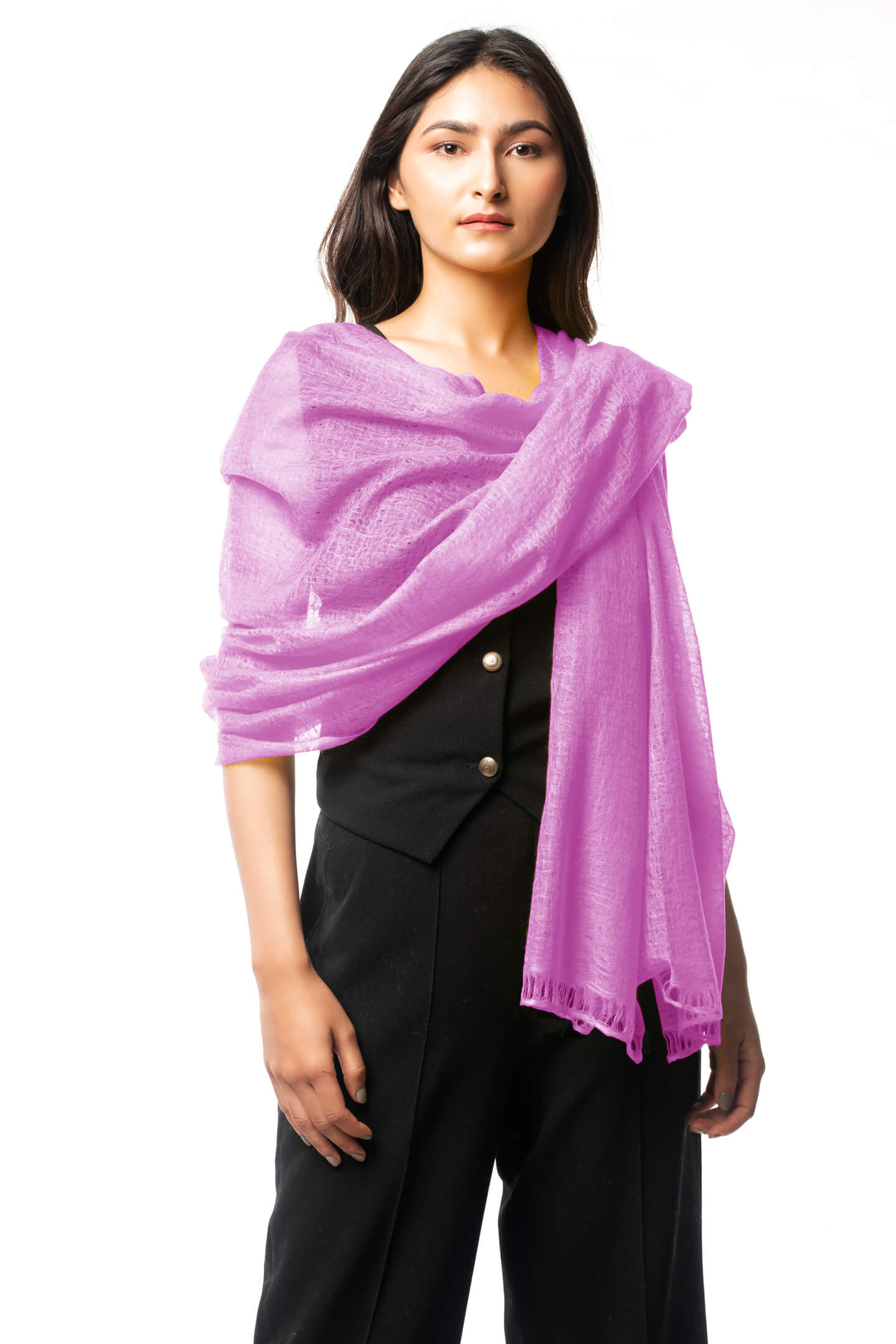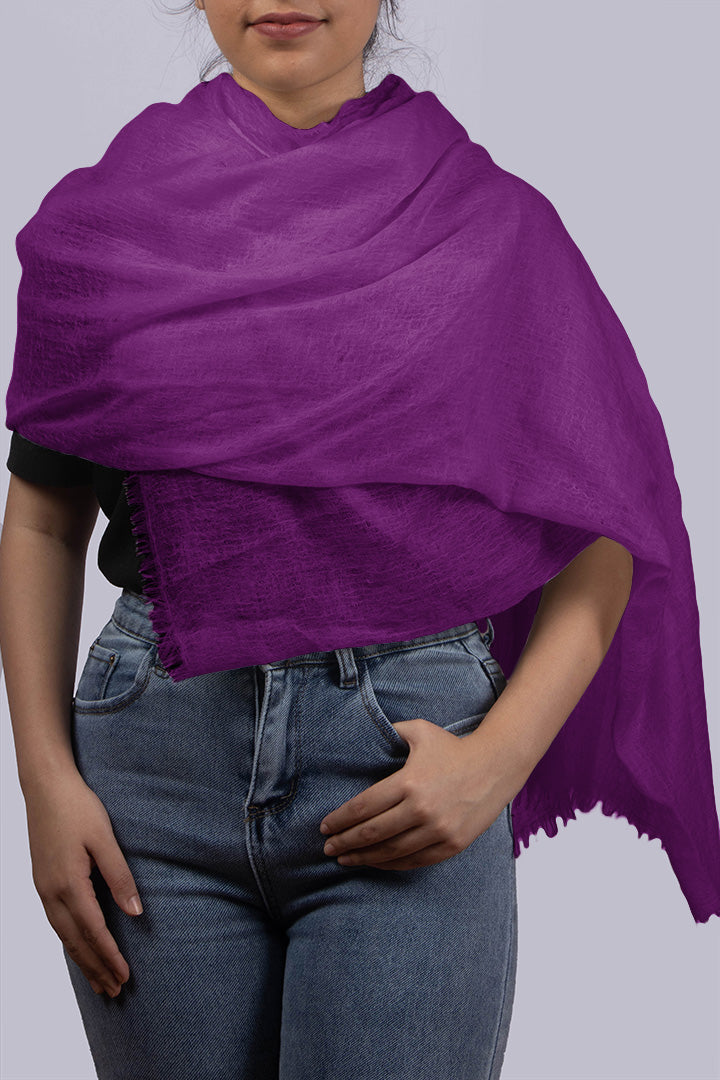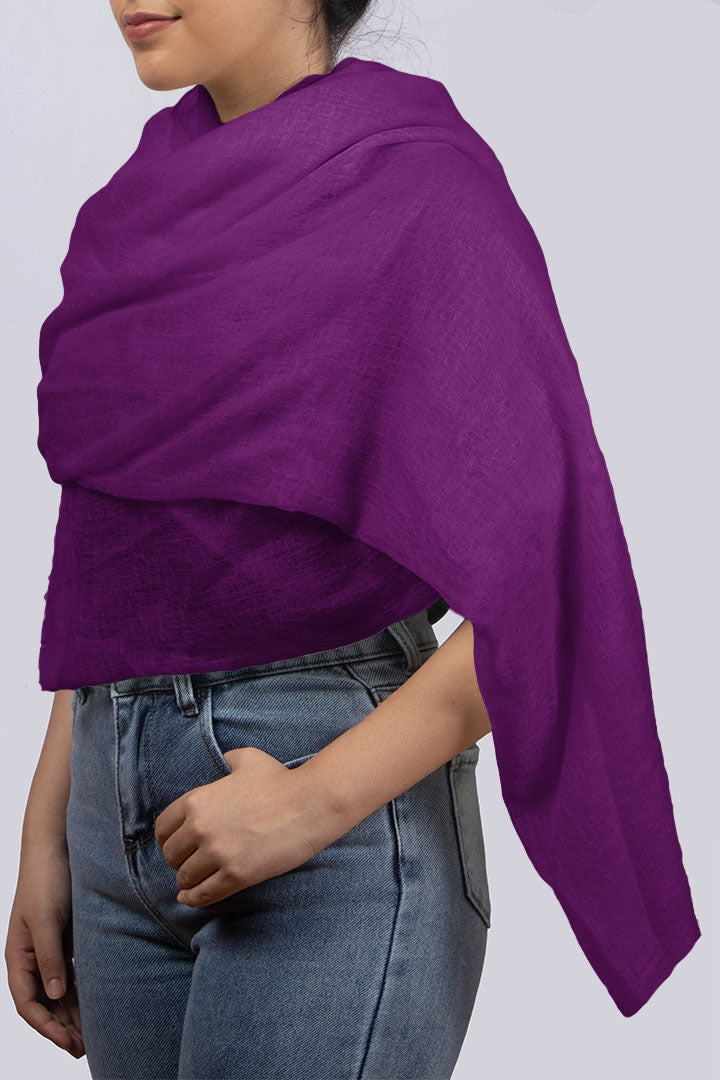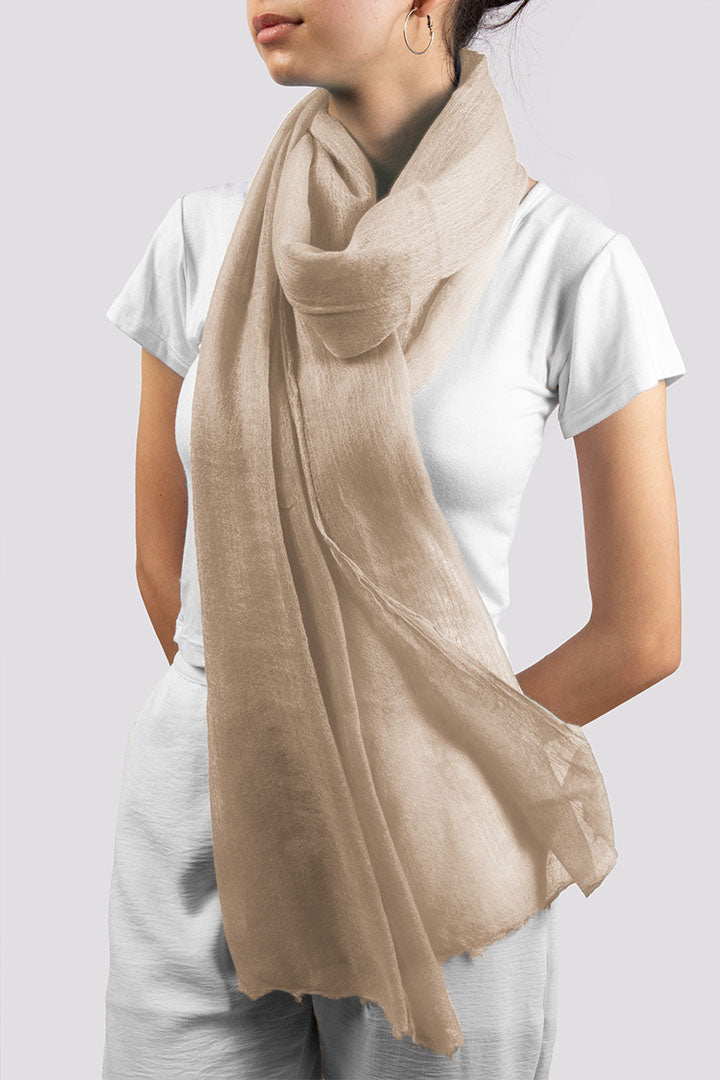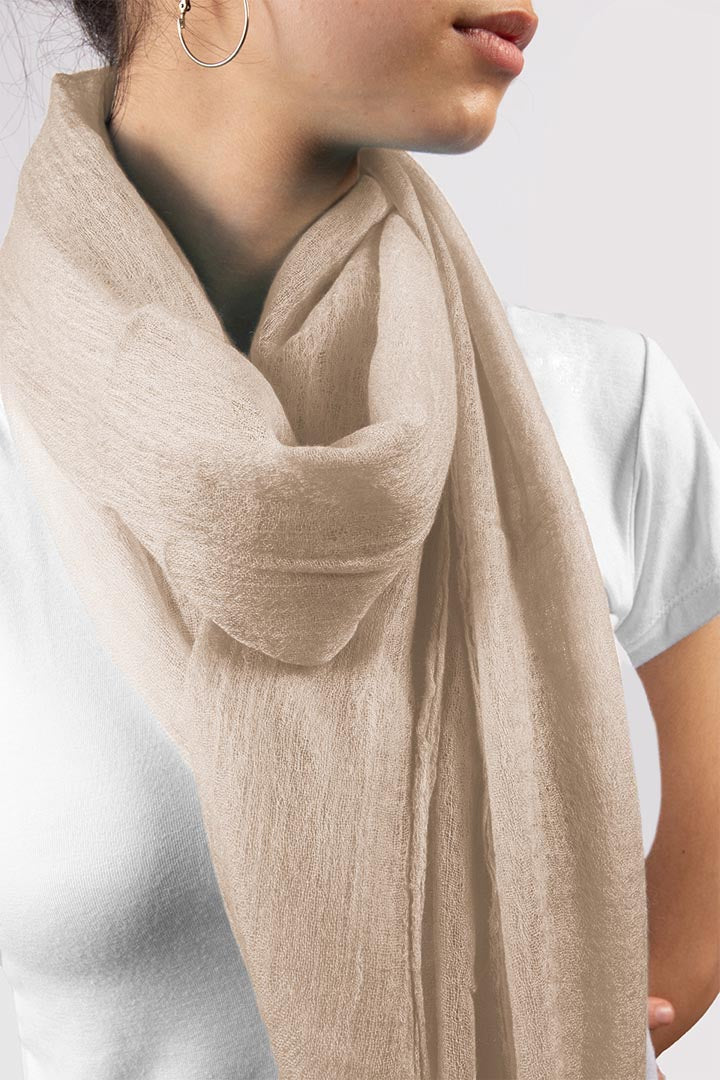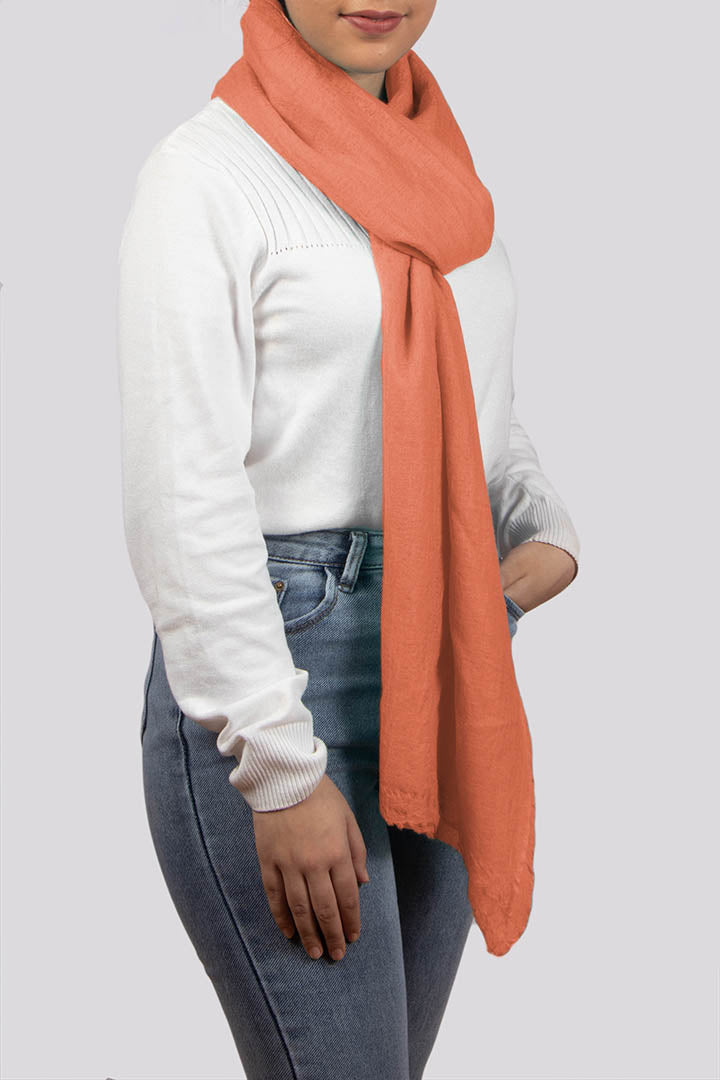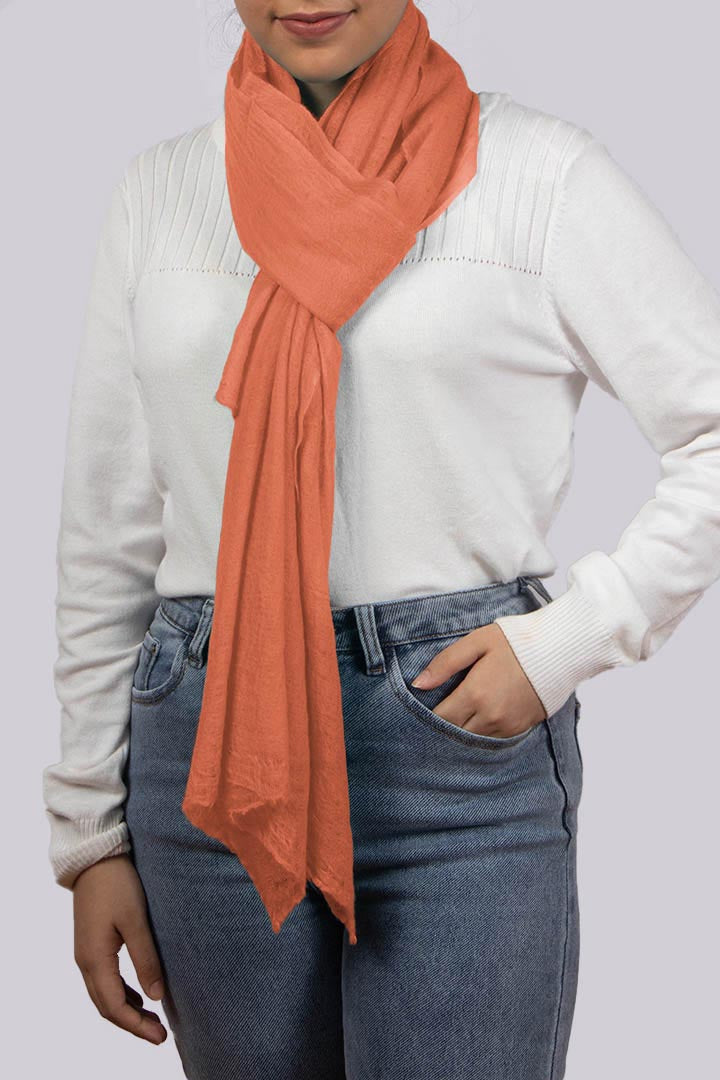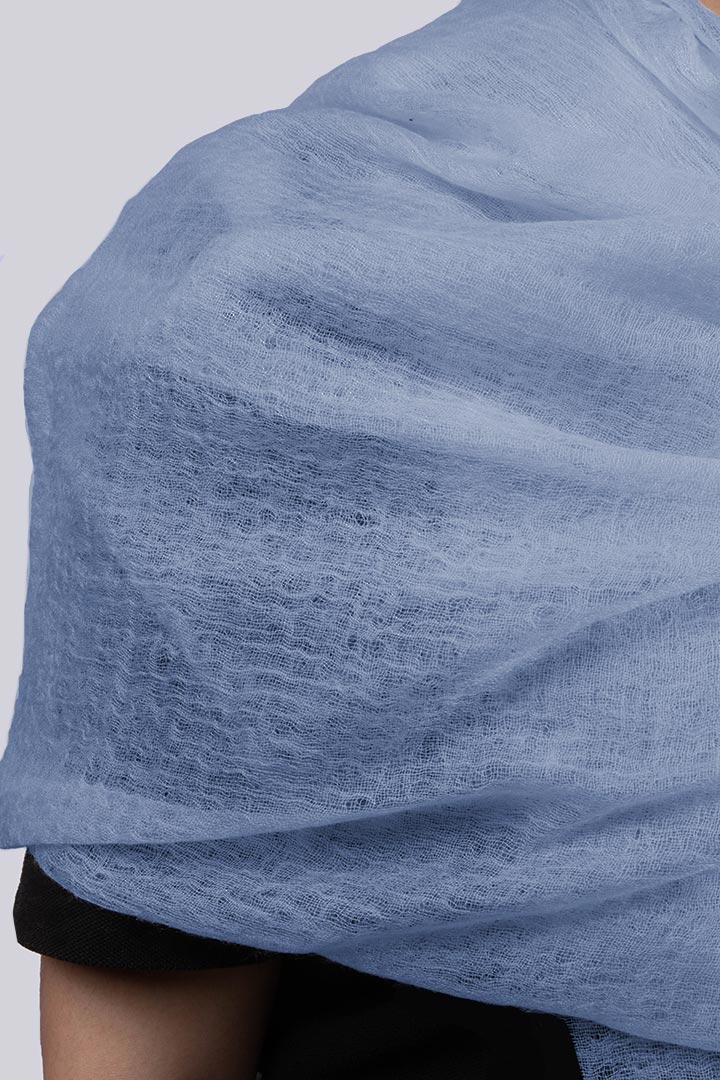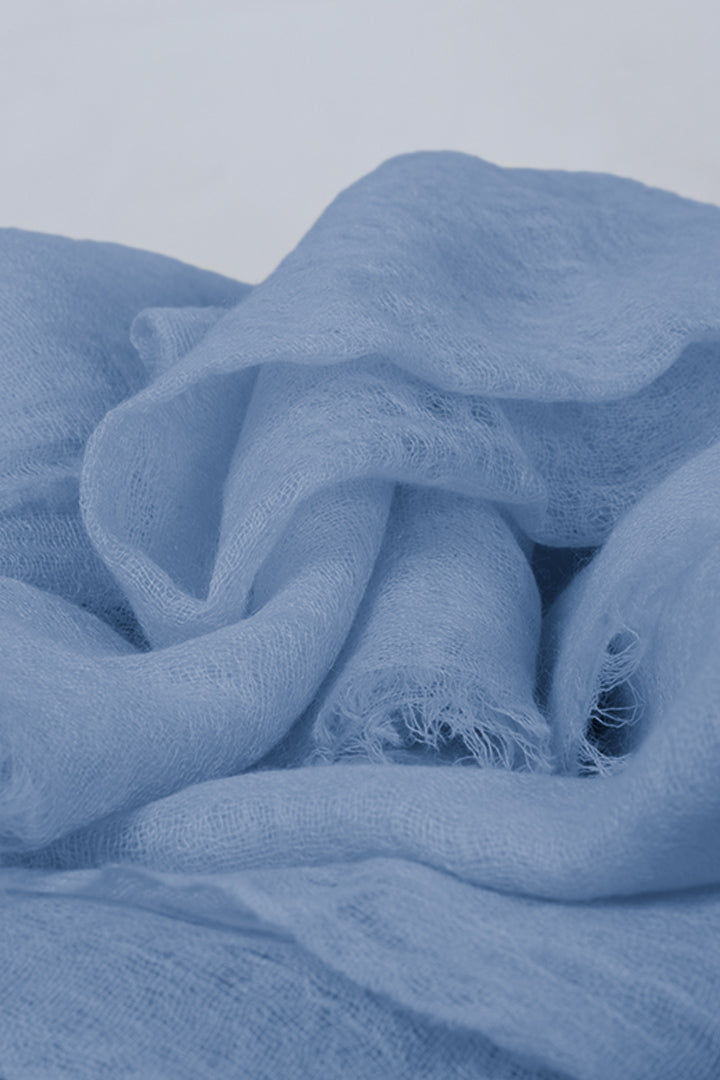The Ultimate Guide to Buying Cashmere Scarves
Cashmere is one of the highly prized and sought-after fabrics in the world, especially for making winter clothes. It is much warmer than other wool, luxuriously soft, and incredibly light. It is astonishing how the self-regulating fabric works well in warmer months too, by keeping you cool.
The limited supply of raw cashmere wool, however, has created scarcity in getting a finished product like a cashmere scarf . So, if you’ve been meaning to treat yourself to a cashmere scarf, it better be the real deal.
Whether you’re shopping for your first article of cashmere or wondering if the one sitting in your closet is genuine, it’s our honor to initiate you into the world of pure cashmere with this guide.
Before we deep-dive into it, be forewarned: “Once you lay your hands on the purest of cashmere, there’s no going back.”
So, what makes for quality cashmere wool?
Certain factors affect the quality of cashmere wool. Primarily, it has mostly to do with the Kashmir or cashmere goats: the climate of their habitat, their living conditions, diet, and how they’re treated. Most important factor is the goat’s habitat and natural surroundings.
Studies show that not all goats produce the same grade of fibers. Some goats are raised in their natural high-altitude, low-temp habitat and others in a low-lying, warmer environment. The higher the altitude, the lower the temperature, and the better the quality and quantity of the fine cashmere hair.
This should come as no surprise because the downy undercoat grown by the Kashmir goats is in response to temperatures at high altitudes (4,000m or more above sea level). The harsh winters (below -40°C) trigger the growth of the super fine cashmere hair underneath the thick, coarse hair as an added protection from the freezing cold for the goats.
With the arrival of spring, the goats no longer require this layer of fine hair to keep them warm. So, they shed this hair in the warmer months between March, April and May.
Here are the criteria for good cashmere:
- The Thickness
Ultra-fine cashmere fibers make the best quality cashmere products. This wool found under the chin and the belly of goats has incredible warming capabilities. It feels wonderfully soft and cozy.
The diameter of cashmere fibers ranges from 14 microns up to 30 microns. Grade A is around 14 microns in diameter. Grade B is 18 to 19 microns wide. And Grade C is around 30 microns thick. For reference, human hair is about 75 microns.
- The Length
The cashmere fibers from the downy undercoat can be 1 to 4 inches long. The longer the fibers, the better. More length ensures better entanglement with each other, resulting in robust yarns, and long-lasting cashmere products.
- The Color
In nature, cashmere wool appears in white, brown, and beige colors. Dyeing allows the fibers, yarns, or fabrics to take on a variety of hues.
While color is a matter of preference, do note that the lighter the coloring it takes on, the lesser the treatment. That said, natural and pastel-colored cashmere products are stronger than heavily-dyed ones.
- The Type of Fiber
Cashmere products can be made from virgin or recycled fibers. The recycled ones are fibers re-purposed from used cashmere products or unsold items. As you can imagine, tearing apart the garments, reducing them back to fibers, and working them into new articles of clothing can harm the material.
Because of this, recycled cashmere fibers, while sustainable, do tend to be less soft and sturdy than virgin cashmere wool.
The Ultimate Guide to Shopping for 100% Pure Felted Cashmere Scarves
Ready to buy a cashmere scarf? Here’s what you should do:
- Label Check
The first place to go is the label. This should contain some information regarding the product. Is it authentic? Is it made of pure cashmere?
Felted pure cashmere scarves should feel the softest and snuggest. When blended with any other material like silk or cotton, cashmere feels different. With silk, cashmere gets a shine and drape boost but becomes less soft. With cotton, cashmere not just becomes less soft but also less fluid.
- Touch Test
- Pilling Test
Pilling is the formation of small balls on the surface of the cashmere fabric due to friction and abrasion. If you rub your hand on a well-made pure cashmere scarf, there should be no pilling with the yarns made with long, perfectly-spun fibers.
After multiple uses, however, authentic cashmere scarves will inevitably form pills, especially around fold or crease areas. These can be carefully removed with little snipping scissors.
- Stretch Test
One of the qualities of cashmere is its ability to maintain its shape and structure. The natural stretch of pure cashmere fibers affords flexibility to the scarf, allowing it to spring back to form at rest.
Conclusion
Cashmere scarves, or any cashmere product for that matter, is a luxury product. As with any investment piece, it is only wise to get the necessary advice and read up on available materials. This due diligence will ensure that you have an authentic experience that only pure cashmere can provide.
Now, carry on and shop for your favorite felted cashmere scarves!
